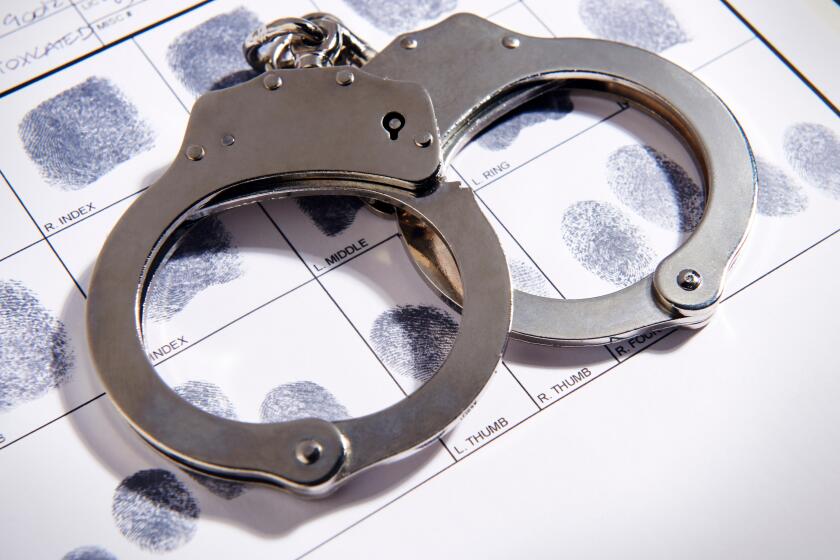The lines are drawn here
- Share via
MIKE WHITEHEAD
Ahoy.
Today, I am staying on the inland side of the line of demarcation
for Newport Harbor while skippering a private yacht. Therefore, I
will be observing the Inland Navigation Rules and Regulations as
defined by the International Regulations for Prevention of Collisions
at Sea commonly known as COLREGS.
You might be asking yourself what am I talking about with terms
like inland rules and line of demarcation. These terms are very
familiar to licensed captains but unfamiliar to the recreational
boater. Why? Simply because Coast Guard certified vessels such as
charter boats have Coast Guard regulations that usually differ
between operating in a harbor versus in the ocean. The Coast Guard
issues the vessel a certificate of inspection that lists the maximum
number of passengers that can be aboard including the number of
required crew plus safety equipment.
A vessel with only an inland Coast Guard certification is not
allowed to cross the line of demarcation when passengers are aboard
the vessel. As such, these charter captains will adhere to the inland
rules with respect to navigation, navigational lights, day shapes,
and sound signals when in the harbor.
However, some vessels are also certified for local coastal or far
offshore ocean operations. Once the vessel crosses the line of
demarcation, the number of passengers might be decreased, the
required crew increased and more safety requirements such as life
rafts might be added. Therefore, the cost of ocean operation rises,
so that is why many charter boats are certified only to carry
passengers in the harbor.
Lines of demarcation are defined as “delineating those waters upon
which mariners shall comply with the International Regulations for
Preventing Collisions at Sea, 1972 (72 COLREGS) and those waters upon
which mariners shall comply with the Inland Navigation Rules. The
waters inside of the lines are Inland Rules waters. The waters
outside the lines are COLREGS waters.”
Got it? No? Well, a subsection of the International and Inland
Navigation Rules book states, “Inland Waters means the navigable
waters of the United States shoreward of the navigational demarcation
lines dividing the high seas from harbors, rivers and other inland
waters of the United States and the waters of the Great Lakes on the
United States side of the International Boundary.” But, everyone with
a vessel more than 12 meters long knows this because this book is
required by the Coast Guard to be aboard ship.
So, where is the line of demarcation? The line of demarcation for
Newport Harbor is drawn between the two green and red channel markers
No. 3 and No. 4 at the seaward tips of the jetties, approximately 275
yards apart. Once you cross this line, then you change from inland
to international rules and regulations. Now you know why many charter
boats turn around before the end of the jetties, being very careful
not to cross into the waters where international rules apply.
The buoy positioned about 1,600 feet seaward of the line of
demarcation is locally referred to as the seal buoy or bell buoy.
Years ago, the bell buoy was changed to a red and white vertically
striped buoy labeled “NWP” with a white light that flashes Morse code
for the letter A (alpha). Now, the buoy is the haul-out home for the
sea lions that must be deaf from the constant ringing of the bell.
I wonder how many boaters have noticed that Newport does not have
entrance buoys numbered No. 1 and No. 2?
TIP OF THE WEEK
Who knows what a red and white vertically striped buoy indicates
to boaters and what is Morse code for the letter A? E-mail me your
answers by Wednesday, and I will put all the correct answers into a
hat for a drawing. One lucky person will receive a complimentary copy
of my “VHF Marine Radio” book published by Bristol Fashion
Publications.
Tune in to my “Boathouse Radio Show” every Saturday from noon to 1
p.m. on KCBQ-AM (1170). You can join in during the nation’s No. 1
boating talk radio show by calling the listener line at (888)
344-1170, and you can listen worldwide over the Internet at
https://www.boat houseradio.com.
Safe voyages.
* MIKE WHITEHEAD is the Pilot’s boating and harbor columnist. Send
him your thoughts and story suggestions by e-mail to
All the latest on Orange County from Orange County.
Get our free TimesOC newsletter.
You may occasionally receive promotional content from the Daily Pilot.



